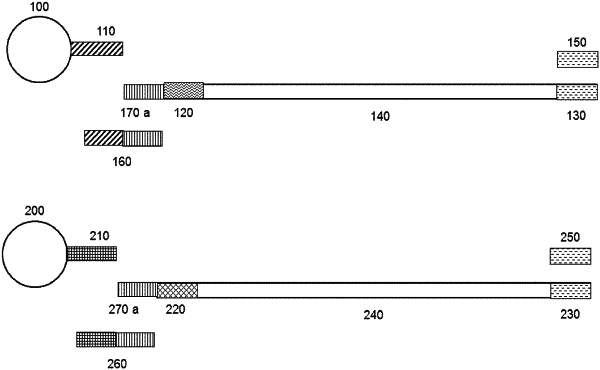| CPC C12Q 1/6806 (2013.01) [C12Q 1/6844 (2013.01); C12Q 1/6846 (2013.01)] | 20 Claims |

|
1. A method of nucleic acid synthesis, comprising:
a) providing a single reaction mixture that provides compartmentalization in an emulsion containing a plurality of supports of a first type that include first capture primers; a plurality of supports of a second type that include second capture primers, wherein the sequences of the first and second capture primers are different, a first population of nucleic acids, wherein the first population of nucleic acids includes at least one nucleic acid of a first adapter type, a second population of nucleic acids, wherein the second population of nucleic acids includes at least one nucleic acid of a second adapter type, wherein the first and second adapter types are different, a first fusion primer having a first sequence portion identical to at least a portion of the first capture primer and a second sequence portion that binds to the first adapter type, and a second primer having a first sequence portion identical to at least a portion of the second capture primer and a second sequence portion that binds to the second adapter type;
b) forming a first amplified population of nucleic acids by amplifying one or more nucleic acids of the first population of nucleic acids, wherein the first amplified population of nucleic acids is attached to one or more supports of the first type; and
c) forming a second amplified population of nucleic acids by amplifying one or more nucleic acids from the second population of nucleic acids, wherein the second amplified population of nucleic acids is attached to one or more supports of the second type.
|